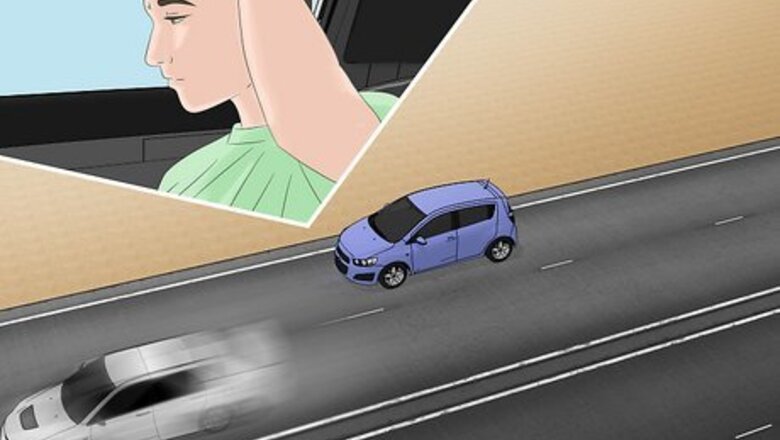
views
- When your car runs out of gas, you lose control of your braking and steering. Soon after, your vehicle will stall because there isn't enough fuel to power your engine.
- Once there's no gas available, your vehicle will abruptly stop, and the fuel gauge on your dashboard will read empty.
- If you're running out of gas while driving, pull over to the right side of the road and turn on your hazard lights. Verify your location and request help from a roadside assistance service.
What happens to your car when you run out of gas?
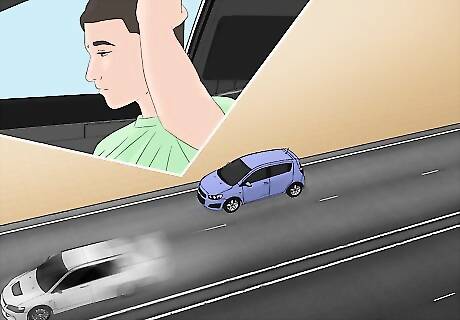
Without gas to run your engine, your vehicle shuts off. Gas provides the fuel to keep your car and engine running. As your engine shuts off (from lack of fuel), you lose the ability to control your vehicle until your car stalls. When there's no gas left, your car abruptly stops–as if you took the key out of the ignition!
Signs of Low Fuel
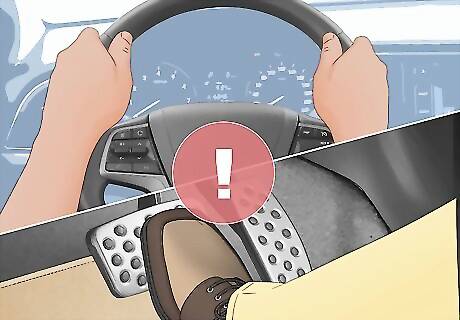
Braking and steering feels harder than usual. The ability to maneuver your car is directly connected to the engine running. Pull over immediately if you notice that it’s hard to brake or your steering feels uncontrollable.
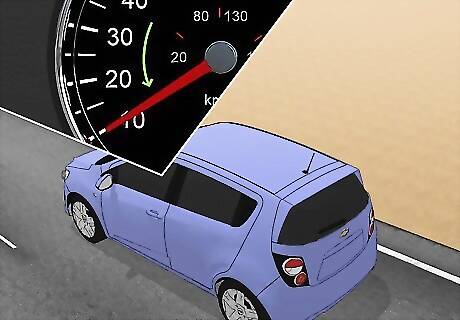
Your engine stutters or your car stalls. Without enough fuel to support your engine, you may have difficulty starting your car or keeping it on. This is especially dangerous if you’re driving on the highway, so make sure to pull over if you are running low on gas!
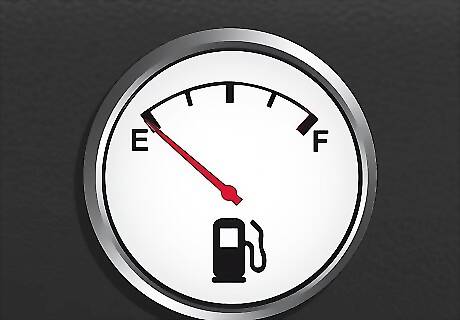
The fuel gauge on the dashboard reads empty. To avoid running out of gas, never let your gas tank get below ¼ full! Locate the nearest gas station when your fuel gauge is running low. For long road trips, plan out your rest stops and locate gas stations along the route of your journey (before your trip). What Happens when You Run Out of Gas Step 4Bullet1.jpg
Getting Help
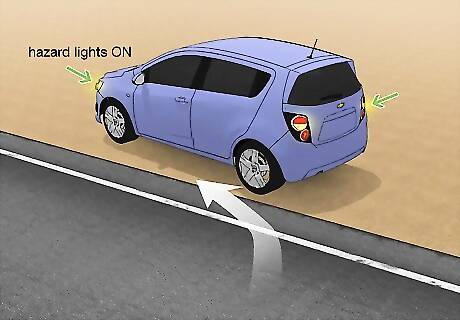
Find a safe parking spot until you can refill your gas tank. If you're driving on the highway, turn on your hazard lights to warn other drivers. Pull over to the right side of the road and park on the shoulder if possible. If your car stalls in the middle of the road, immediately turn on your hazard lights and shift your gear into Neutral. If possible, coast your vehicle to the side of the road then try to restart your engine. Stay in your car if your engine doesn’t start and call the police for help.What Happens when You Run Out of Gas Step 5Bullet1.jpg Even if you’re not on the highway, you should still pull over and turn on your hazard lights. Don’t risk trying to drive a little further to reach a gas station–your car may stall in the middle of the road!
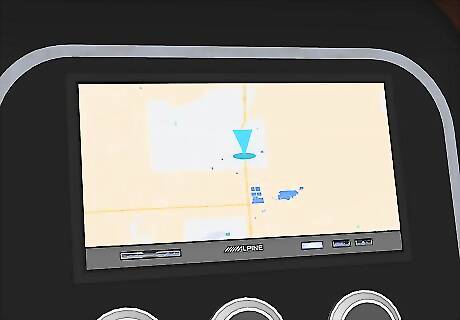
Determine your location to receive help for your vehicle. Use your phone or car’s GPS to quickly identify your location. If you don’t have service, look at road signs or nearby buildings to determine the general area of where you are.

Request roadside assistance or call your car insurance company. If you have a roadside assistance membership (like AAA Road Service) or a program through your car insurance company, give them a call to request for help. They will bring you enough gas to get you to the nearest gas station or tow your car. If you don’t have insurance or a membership, most states have emergency highway response systems that provide assistance for free–find their phone number on your local department of traffic (DOT) website. If you don’t have cell service, flag down someone on the road. Ask them to bring you gas or make a phone call for you. Use your best judgment when approaching strangers, and be cautious if someone insists on giving you a free ride! Alternatively, have a friend or family member bring you gas or call roadside assistance on your behalf. If all else fails, walk to a nearby gas station and bring gas back to your car.
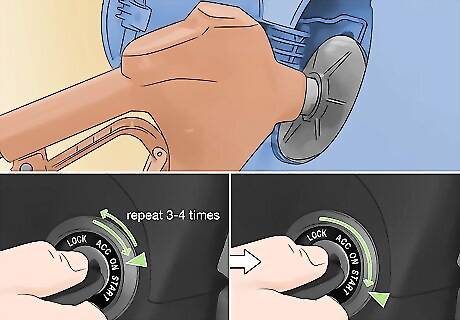
Refill your gas tank and restart your car. After refueling, you may have to pump your gas pedal a few times (with the car off) to get the new gas flowing to your engine. Insert your key into the ignition and turn it to the ‘on’ position (without starting your engine). Repeat 3-4 times before turning the key all the way to restart the car. If your car doesn’t restart on the first attempt, wait a few minutes and try again. After 5 attempts, wait an hour before trying again or contact a towing service to take your car to the auto shop of your choice.What Happens when You Run Out of Gas Step 8Bullet1.jpg
Will running out of gas damage your car?

The fuel pump may overheat and lead to engine failure. The fuel pump is designed to pull gas from the bottom of your gas tank and deliver fuel to your engine. Gas acts as a lubricant and cooling agent for the fuel pump, so your fuel pump overheats when your gas tank is empty (and only air is passing through). If you’re low on fuel, avoid driving at high speed. You increase the likelihood of your fuel pump being unable to deliver enough fuel to your engine.What Happens when You Run Out of Gas Step 9Bullet1.jpg Consistently running your car low on fuel increases the likelihood of burning out your fuel pump and leading to engine failure. It’s not cheap to replace your fuel pump either! Costs range from approximately $380-800, depending on the vehicle make and model.
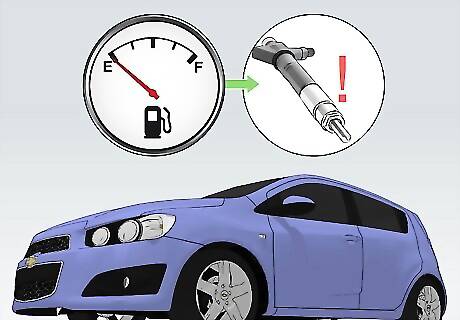
Low gas levels can lead to clogged fuel injectors. Attached to the bottom of the fuel pump is a fuel filter that removes debris from your gas. Gas moves from the fuel pump to your car’s engine via fuel injectors. When gas levels are low, impurities are pushed through the filter, clogging the fuel injectors and preventing gas from reaching your engine. If your car won’t start or you’re having car troubles, here’s a guide on how to check your fuel pump.
If the vehicle is powered by diesel, the fuel system will need to be bled in order for the engine to restart. All diesel engines have two fuel pumps: the low-pressure lift pump draws fuel from the tank and brings it to the high-pressure injector pump. If the lift pump pushes air into the injector pump, the system will become air-locked, preventing fuel from getting to the injectors. To bleed the system, start by cracking open a bleed screw atop the fuel filter. Run the fuel pump (either with the key on the on position or by cranking) until fuel sprays out of the screw. Then close it. Next, back off all the fittings on the lines connected to the fuel injectors. Crank the engine until fuel sprays out of each injector, then tighten the fittings back down. Pulling a decompression valve, if present, will save battery power during this process by making the engine easier to turn over.











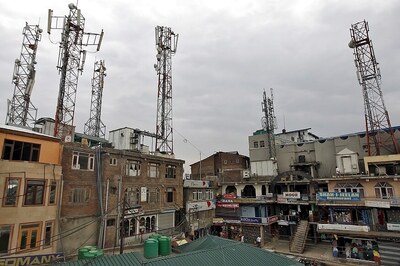







Comments
0 comment